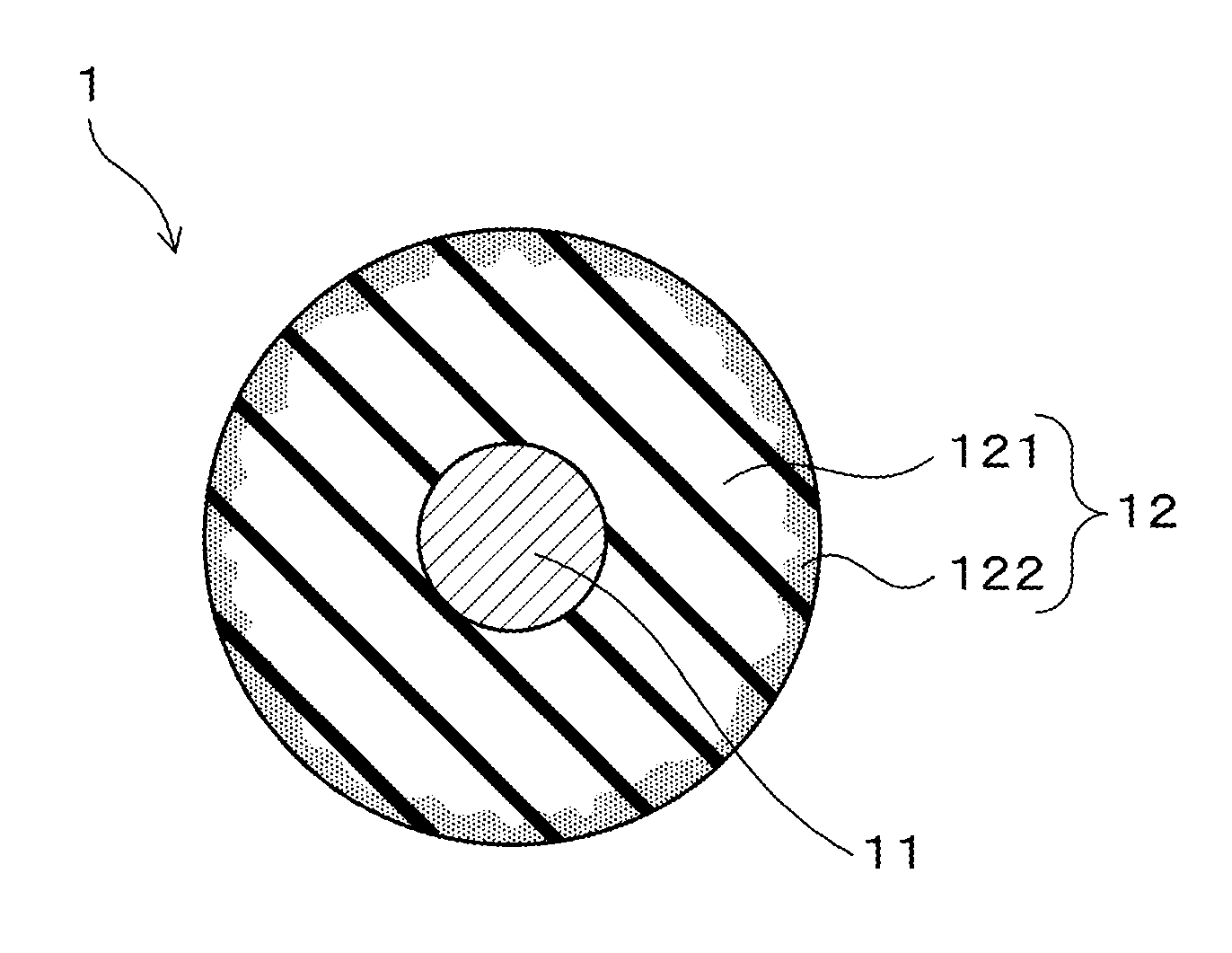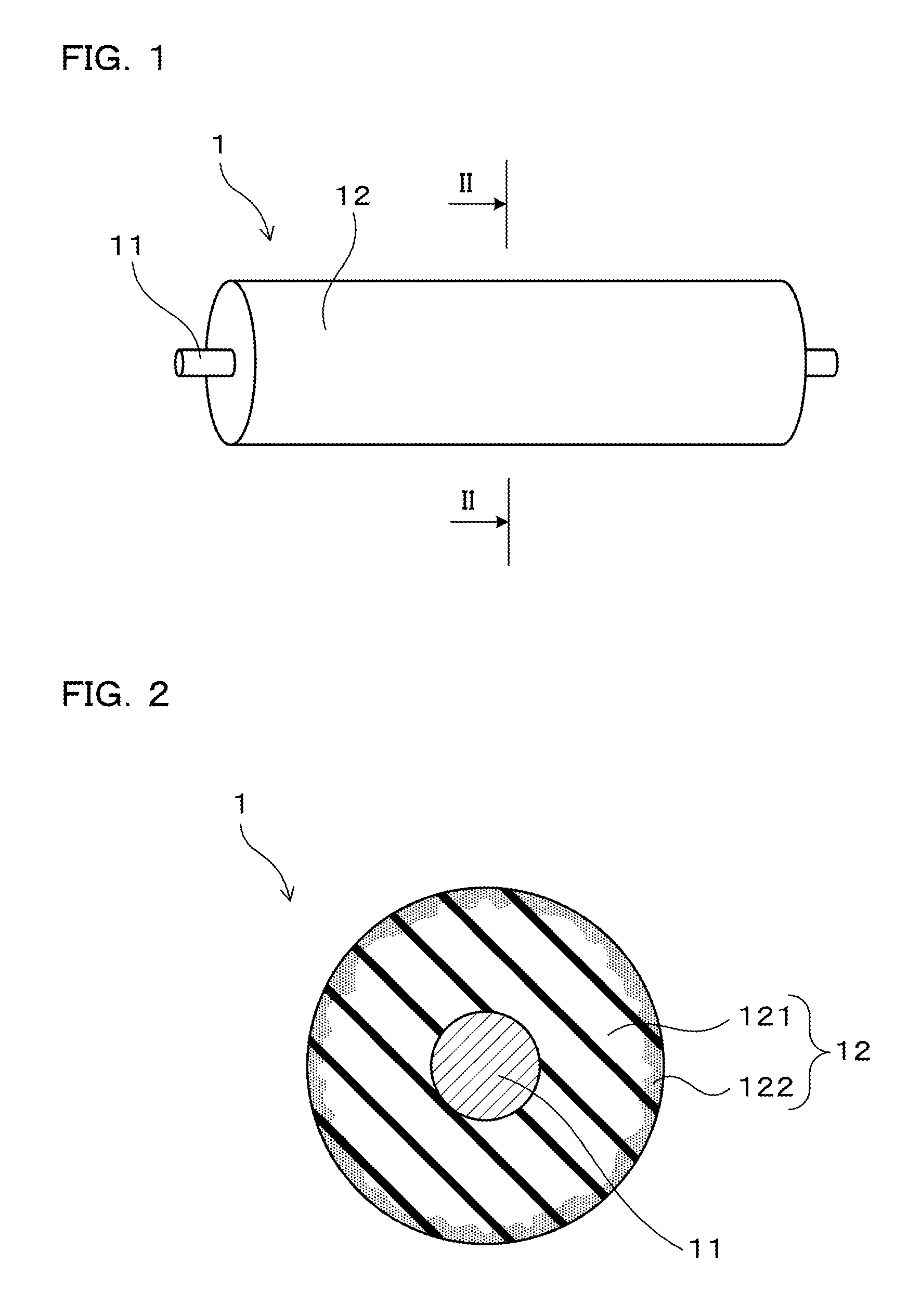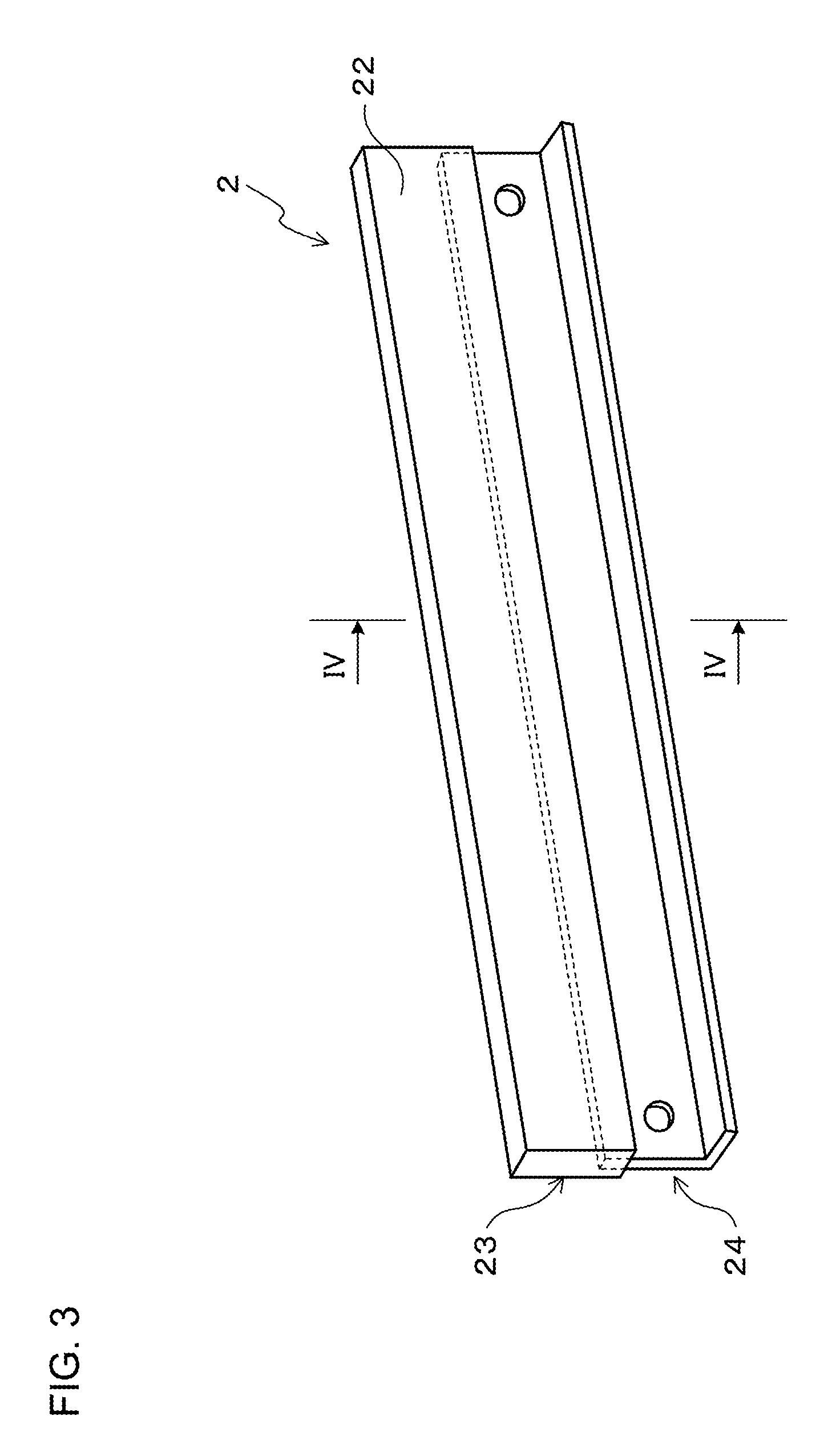Electrophotographic device member
a technology of electrotrophotography and device body, which is applied in the direction of electrographic process, instrumentation, corona discharge, etc., can solve the problems of poor slidability, poor adhesion of powder, and disadvantages of rubber, so as to reduce surface friction, reduce friction, and improve hardness
- Summary
- Abstract
- Description
- Claims
- Application Information
AI Technical Summary
Benefits of technology
Problems solved by technology
Method used
Image
Examples
examples
[0106]Samples to which the above-described modified rubber elastic body was applied and comparative samples were prepared and evaluated as materials for a portion including the surface of an electrophotographic device member used in an electrophotographic image forming device. Hereinafter, an experimental example of these samples will be explained.
[0107]In this experimental example, the electrophotographic device member is specifically a roll member or a blade member. Specifically, among the samples of electrophotographic device member to which the modified rubber elastic body was applied, a roll member 1 has an axis body 11 and a layered modified rubber elastic body 12 formed along the outer periphery of the axis body 11, as shown in FIGS. 1 and 2. The modified rubber elastic body 12 has a rubber elastic body 121 with rubber elasticity and a surface-treated layer 122 composed of a cured product of photocurable composition impregnated into the rubber elastic body 121 from the surfac...
experimental example
Preparation of Photopolymerizable Polymer
[0110]Photopolymerizable polymers to be incorporated in the photocurable composition and comparative polymers were prepared as follows.
[0111]Photopolymerizable Polymer A
[0112]In a 100-mL reaction flask, 1.66 g (0.36 mmol) of acrylate-modified silicone oil (manufactured by Shin-Etsu Chemical Co., Ltd; “X-22-174DX”), 5.61 g (13 mmol) of 2-(perfluorohexyl)ethyl acrylate (manufactured by Daikin Industries, Ltd.; “R-1620”), 1.69 g (13 mmol) of 2-hydroxyethyl methacrylate (Tokyo Chemical Industry Co., Ltd.), 7.37 g (73.64 mmol) of methyl methacrylate (manufactured by Junsei Chemical Co., Ltd.), 1.24 g (4 mmol) of dimethyl 1,1′-azobis(1-cyclohexanecarboxylate) (Wako Chemical Industries, Ltd.; “VE-73”) and 75 g of methyl ethyl ketone (MEK) were charged, and bubbled with nitrogen while being stirred for 5 minutes, and thereafter polymerized at an internal liquid temperature of 75° C. for 7 hours to produce a copolymer.
[0113]In the meantime, the acryla...
PUM
| Property | Measurement | Unit |
|---|---|---|
| mol % | aaaaa | aaaaa |
| mol % | aaaaa | aaaaa |
| liquid temperature | aaaaa | aaaaa |
Abstract
Description
Claims
Application Information
 Login to View More
Login to View More - R&D
- Intellectual Property
- Life Sciences
- Materials
- Tech Scout
- Unparalleled Data Quality
- Higher Quality Content
- 60% Fewer Hallucinations
Browse by: Latest US Patents, China's latest patents, Technical Efficacy Thesaurus, Application Domain, Technology Topic, Popular Technical Reports.
© 2025 PatSnap. All rights reserved.Legal|Privacy policy|Modern Slavery Act Transparency Statement|Sitemap|About US| Contact US: help@patsnap.com



